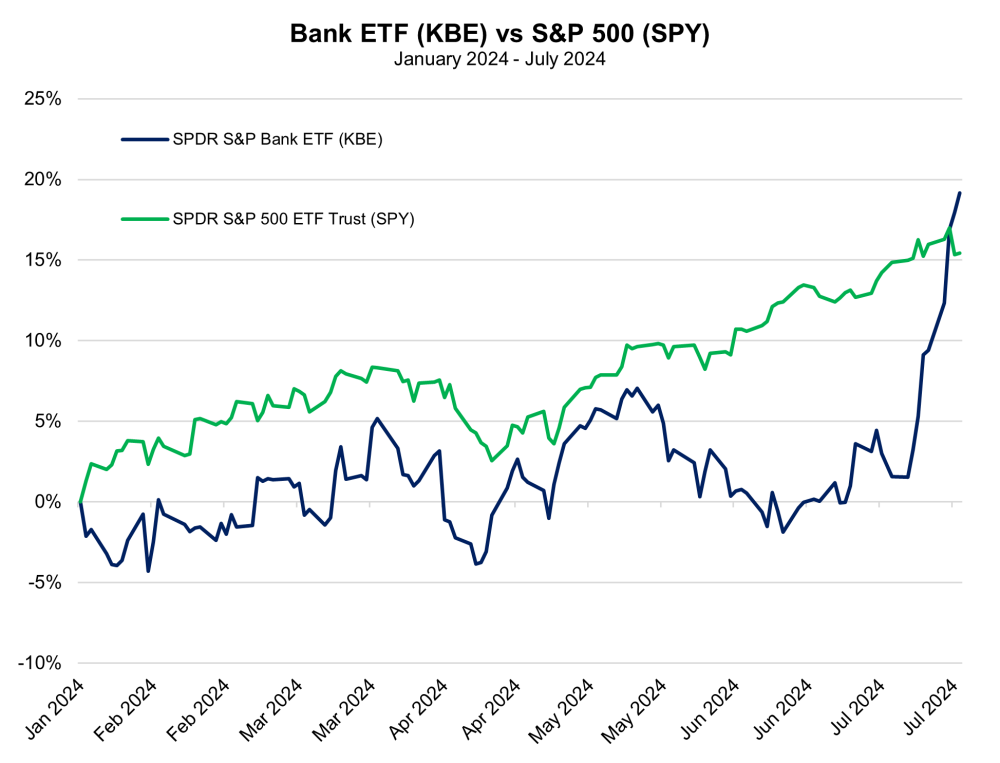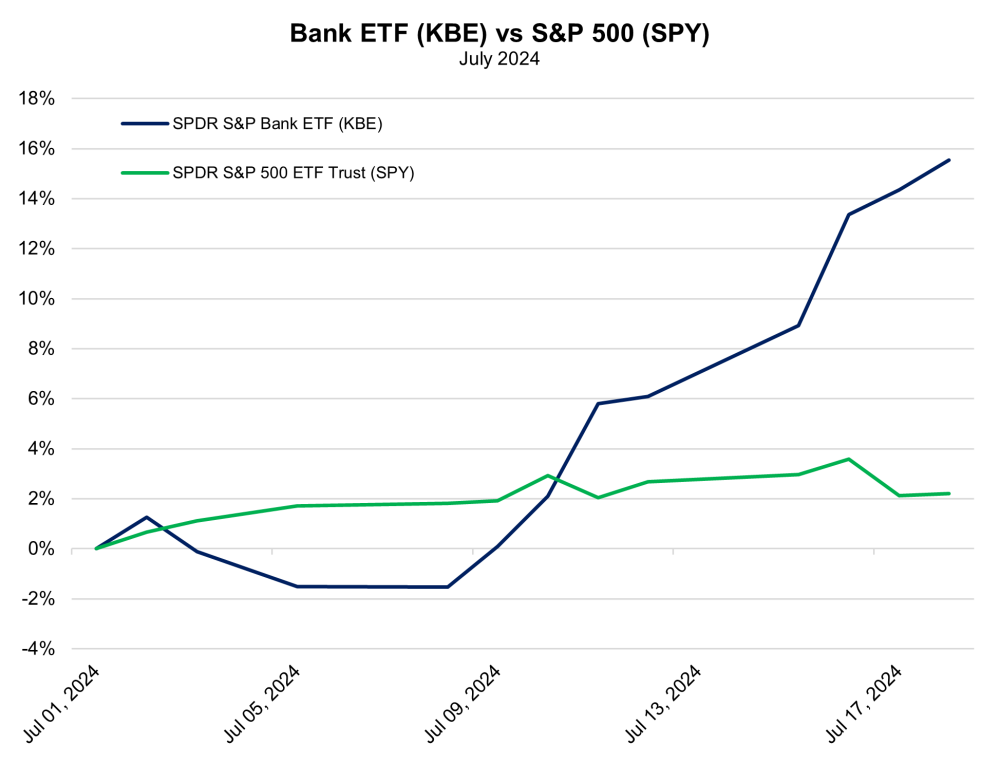In July, U.S. consumer confidence unexpectedly ticked up, offering a glimmer of optimism despite ongoing concerns about inflation and rising borrowing costs. The Federal Reserve’s closely watched gauge revealed that inflation eased slightly in June, with the personal consumption expenditures price index inching up by just 0.1% on the month and 2.5% year-over-year. While this slightly improved from May’s 2.6% increase, inflation still hovers above the Fed’s long-term target of 2%, keeping the door open for a potential interest rate cut in September.
In such an inflationary environment, the insurance industry emerges as a safe harbor for investors seeking stability. Insurance isn’t just a safety net; it’s a lifeline for individuals and businesses alike, offering protection from unforeseen events and often fulfilling legal and financial requirements. The industry is notoriously competitive, with many insurers struggling to stand out. However, The Progressive Corporation (PGR) has distinguished itself by excelling in balancing risk and reward.
Progressive’s Strategy for Thriving in Inflationary Times
In recent years, the insurance sector has battled rising inflation, which has driven up repair and replacement costs and impacted profitability. Yet Progressive has adeptly navigated the storm. Since its public debut in 1971, the powerhouse automotive insurer has consistently aimed for a combined ratio of 96%, ensuring it makes $4 in profit for every $100 in premiums received.
While many auto insurers struggled with their worst loss ratios in two decades last year, PGR achieved a combined ratio of 94.5%. This year, they’ve done even better, with a combined ratio of 91.9% in the first half. This strong performance has translated into impressive stock returns, with shares up more than 70% over the past year and nearly 35% year-to-date.
For the second quarter that ended June 30, 2024, PGR’s net premiums earned increased 19% year-over-year to $17.21 billion. Its net income came in at $1.46 billion, or $2.48 per common share, up 322.3% and 335.1% year-over-year, respectively. The company generated total revenues of $35.38 billion year-to-date, compared to $29.66 billion in 2023.
Street expects PGR’s revenue and EPS for the third quarter (ending September 2024) to increase 21.1% and 25.5% year-over-year to $18.89 billion and $2.65, respectively. Moreover, the company has consistently surpassed consensus EPS estimates in each of the trailing four quarters, including the second quarter.
What sets Progressive apart is its innovative approach to insurance. As one of the pioneers in using telematics, or driver data, to price insurance policies, the company has leveraged technology to stay ahead of its competitors.
Moreover, PGR’s non-GAAP PEG ratio is a mere 0.06, indicating that despite its solid growth prospects, the stock is undervalued, making it an attractive option for growth-seeking investors. The company’s strong performance across different market conditions due to its beta of 0.36 further enhances its appeal.
Progressive’s conservative investment strategy, with a focus on shorter-dated debt investments, positions it well to benefit from sustained higher interest rates, making it a strong long-term hold for investors. Morgan Stanley analyst Bob Jian Huang forecasts that the company will capture over 18% of the market by 2028, thanks to its competitive strength and innovative edge.
Progressive vs. Allstate: Which Stock Offers Greater Investment Potential?
While Progressive has adeptly managed rising inflation and repair costs with innovative approaches like telematics, The Allstate Corporation (ALL) has faced its own set of challenges, particularly from natural disasters and high inflation. In 2023, U.S. home insurers experienced their worst underwriting losses this century, with net underwriting losses reaching an eye-watering $15.2 billion. This was largely due to increasing populations in high-risk areas like California and Texas, which exacerbated the impact of natural catastrophes.
To combat these pressures, Allstate has proposed a substantial 34% increase in homeowners’ insurance premiums. This move, pending approval from the California Department of Insurance, aims to mitigate the financial impact of escalating claims and weather-related damages. This isn’t unprecedented, as insurance companies, including State Farm, have also sought similar rate hikes based on claims history and market conditions.
Although this move mirrors PGR’s strategy of adjusting premiums to maintain profitability amidst rising costs, ALL’s focus has been more on addressing the financial stress from natural disasters rather than leveraging technology for competitive advantage.
Despite these hurdles, ALL shares have surged more than 52% over the past year and 22.3% year-to-date, demonstrating strong performance in a turbulent market.
Financially, the company has delivered solid results that are at par with Progressive’s financial performance. ALL’s consolidated net revenues for the second quarter ended June 30, 2024, increased 12.4% year-over-year to $15.71 billion. The company’s adjusted net income amounted to $429 million and $1.61 per share, compared to an adjusted net loss of $1.16 billion and $4.42 per share in the year-ago quarter, respectively. Furthermore, its property-liability insurance premiums earned rose 11.9% year-over-year to $13.34 billion.
Analysts expect ALL’s revenue for the quarter ending September 30, 2024, to increase 8.4% year-over-year to $15.71 billion. Its EPS for the same period is expected to increase 273.6% year-over-year to $3.03. It surpassed the consensus EPS estimates in three of the trailing four quarters.
Moreover, the company’s strong financial health enables it to consistently deliver value to its shareholders. With 13 years of consecutive dividend growth, ALL pays a $3.68 per share dividend annually, translating to a 2.12% yield on the current share price. Its four-year dividend yield is 2.49%. The company’s dividend payouts have grown at CAGRs of 10.3% and 13.5% over the past three and five years, respectively.
Allstate is currently trading at a relatively discounted valuation. The stock’s forward EV/Sales multiple stands at 0.87, which is below the industry average of 3.17x and its five-year median of 0.97x. This attractive valuation provides a margin of safety for investors, reducing downside risk while offering substantial upside potential.
Given these factors, Allstate presents a strong investment case. However, when comparing it to Progressive, ALL’s more traditional approach may not offer the same innovative edge. While both companies exhibit resilience and growth prospects, PGR’s forward-thinking strategies and consistent performance in diverse market conditions position it as the more compelling choice for those seeking robust long-term returns.
By Ino.com – See our Trader Blog, INO TV Free & Market Analysis Alerts
Source: Inflation-Resilient Stocks: Why Progressive (PGR) Stands Out






 Article by
Article by 

























